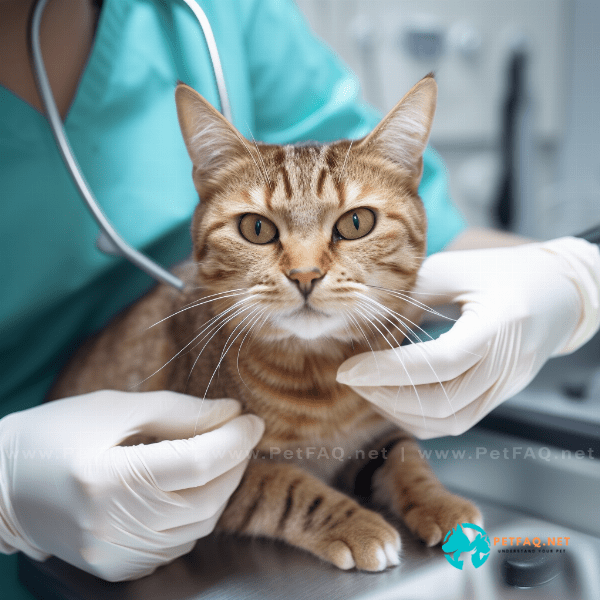Table of Contents
- Understanding Feline Dental Disease: An Overview
- Common Causes of Dental Disease in Cats
- Signs and Symptoms of Dental Disease in Cats
- Complications and Risks Associated with Feline Dental Disease
- Diagnosis of Feline Dental Disease: What to Expect
- Treatment Options for Feline Dental Disease: A Comprehensive Guide
- Home Care and Prevention Tips for Maintaining Your Cat’s Dental Health
- The Importance of Regular Veterinary Dental Exams for Cats
- Addressing Dental Anxiety in Cats: Tips for a Successful Visit
Understanding Feline Dental Disease: An Overview
Dental disease in cats is a common but often overlooked problem that can cause significant pain and discomfort. Cats are masters of hiding pain and discomfort, and dental disease is no exception. Therefore, it is crucial for cat owners to understand the basics of feline dental disease, its causes, symptoms, and treatment options.
The Anatomy of a Cat’s Mouth
Before delving into the details of feline dental disease, it is essential to understand the anatomy of a cat’s mouth. A cat’s mouth consists of teeth, gums, tongue, and other structures that play a vital role in the cat’s overall health. Cats have 30 teeth, and their teeth are designed for tearing and shredding meat. The teeth are held in place by roots that are anchored in the jawbone.
What is Feline Dental Disease?
Feline dental disease refers to any condition that affects a cat’s teeth, gums, or related structures. It can range from mild tartar buildup to severe infections that can spread to other parts of the body. Dental disease in cats is caused by a variety of factors, including poor dental hygiene, genetics, age, and underlying health conditions.
Symptoms of Dental Disease in Cats
Cats with dental disease may exhibit a range of symptoms, including bad breath, difficulty eating, drooling, pawing at the mouth, and bleeding gums. They may also show signs of pain, such as reluctance to eat, weight loss, and lethargy. If left untreated, dental disease can lead to more severe health problems, such as abscesses, tooth loss, and infections.
Prevention and Treatment of Dental Disease in Cats
Prevention is key when it comes to feline dental disease. Regular dental checkups and cleanings can help prevent dental disease or catch it early when it is more easily treatable. In addition, cat owners can take steps to promote good dental hygiene at home, such as brushing their cat’s teeth and feeding them a healthy diet.
When dental disease is diagnosed, treatment may involve a combination of professional cleaning, extractions, and medication. The goal of treatment is to alleviate pain and discomfort, prevent further damage to the teeth and gums, and promote overall health and well-being.
In conclusion, dental disease in cats is a common problem that can have serious health consequences if left untreated. By understanding the basics of feline dental disease, cat owners can take steps to prevent it or catch it early when it is more easily treatable. Regular dental checkups and cleanings, good dental hygiene at home, and prompt treatment of dental disease can help keep your cat healthy and happy for years to come.
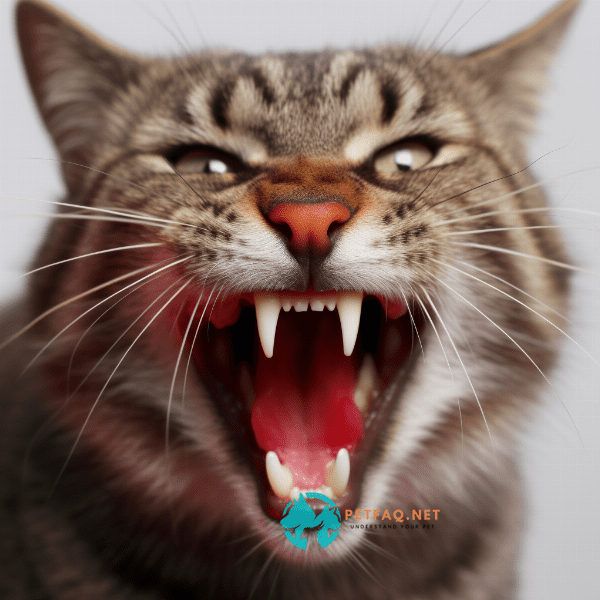
Common Causes of Dental Disease in Cats
Dental disease in cats can be caused by a variety of factors. Understanding these causes can help cat owners take steps to prevent dental disease or catch it early when it is more easily treatable.
Poor Dental Hygiene
The most common cause of dental disease in cats is poor dental hygiene. When cats do not receive regular dental care, plaque and tartar can build up on their teeth, leading to gum disease, tooth decay, and other dental problems. Plaque is a sticky film that forms on the teeth, while tartar is hardened plaque that cannot be removed with regular brushing.
Genetics
Genetics can also play a role in dental disease in cats. Some cats are more prone to dental problems than others, and certain breeds may be more susceptible to dental disease. For example, Siamese and Persian cats are more prone to dental disease than other breeds.
Age
As cats age, they become more susceptible to dental disease. Older cats are more likely to have tartar buildup, gum disease, and other dental problems. Regular dental checkups and cleanings can help prevent or catch dental disease early in older cats.
Underlying Health Conditions
Underlying health conditions can also contribute to dental disease in cats. For example, cats with diabetes or kidney disease may be more prone to dental problems. In addition, certain medications can cause dry mouth, which can increase the risk of dental disease.
Diet
A cat’s diet can also play a role in dental disease. Cats that consume a diet high in carbohydrates are more likely to develop dental problems than cats that eat a diet high in protein. Dry kibble can also contribute to dental disease, as it can get stuck between teeth and lead to tartar buildup.
In conclusion, dental disease in cats can have multiple causes. Poor dental hygiene, genetics, age, underlying health conditions, and diet can all contribute to dental problems in cats. By understanding these causes, cat owners can take steps to prevent dental disease or catch it early when it is more easily treatable. Regular dental checkups and cleanings, good dental hygiene at home, and a healthy diet can all help keep your cat’s teeth and gums healthy.
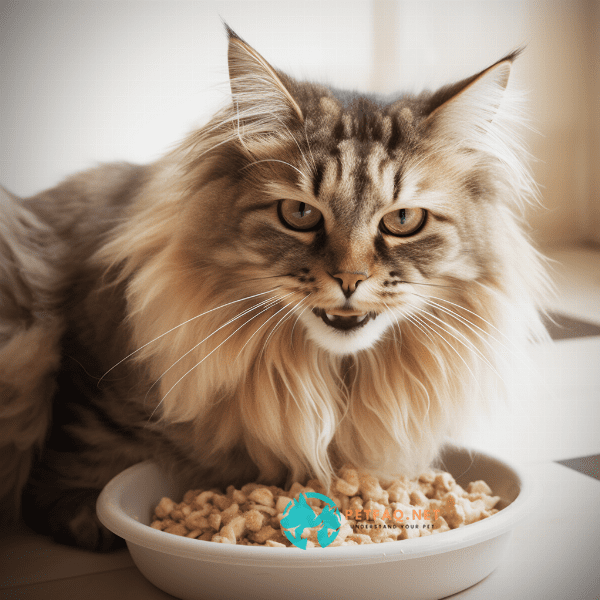
Signs and Symptoms of Dental Disease in Cats
Dental disease in cats can be difficult to detect, as cats are adept at hiding pain and discomfort. However, there are some signs and symptoms that cat owners can look out for that may indicate dental problems.
Bad Breath
One of the most common signs of dental disease in cats is bad breath. If your cat’s breath has an unusually strong odor, it may be a sign of dental problems.
Difficulty Eating
Cats with dental disease may have difficulty eating or may show a reluctance to eat altogether. This can be due to pain or discomfort while chewing.
Pawing at the Mouth
If your cat is pawing at their mouth, it may be a sign of dental problems. This behavior may be an attempt to alleviate pain or discomfort.
Bleeding Gums
Bleeding gums can be a sign of gum disease, which is a common dental problem in cats. If you notice bleeding when your cat chews or plays with toys, it may be a sign of dental disease.
Weight Loss
Dental disease can lead to weight loss in cats, as they may have difficulty eating due to pain or discomfort. If your cat is losing weight, it is essential to have them checked by a veterinarian to rule out dental problems.
Lethargy
Cats with dental disease may also show signs of lethargy or decreased activity levels. This can be due to pain or discomfort and can be a sign that your cat needs dental care.
In conclusion, dental disease in cats can be difficult to detect, but there are some signs and symptoms that cat owners can look out for. Bad breath, difficulty eating, pawing at the mouth, bleeding gums, weight loss, and lethargy can all be signs of dental problems in cats. If you notice any of these symptoms in your cat, it is essential to have them checked by a veterinarian to rule out dental disease. Regular dental checkups and cleanings can also help prevent dental problems and keep your cat healthy.

Complications and Risks Associated with Feline Dental Disease
Dental disease in cats can have significant consequences if left untreated. It is important for cat owners to be aware of the complications and risks associated with feline dental disease.
Tooth Loss
One of the most significant complications of dental disease in cats is tooth loss. If dental disease is left untreated, it can lead to severe infections and abscesses that can cause teeth to become loose or fall out.
Oral Pain and Discomfort
Dental disease in cats can cause significant pain and discomfort. Cats may have difficulty eating or may show signs of pain while chewing. They may also paw at their mouth or show signs of reluctance to be touched around the face and mouth.
Spread of Infection
Dental disease in cats can also lead to the spread of infection. Infections in the mouth can spread to other parts of the body, such as the kidneys, liver, and heart, and can lead to serious health problems.
Decreased Quality of Life
Untreated dental disease can lead to a decreased quality of life for cats. Cats with dental problems may have difficulty eating, playing, and interacting with their owners, and may experience chronic pain and discomfort.
Increased Veterinary Costs
Treating dental disease in cats can be costly, particularly if it is left untreated for an extended period. Regular dental checkups and cleanings can help prevent dental disease and catch it early when it is more easily treatable.
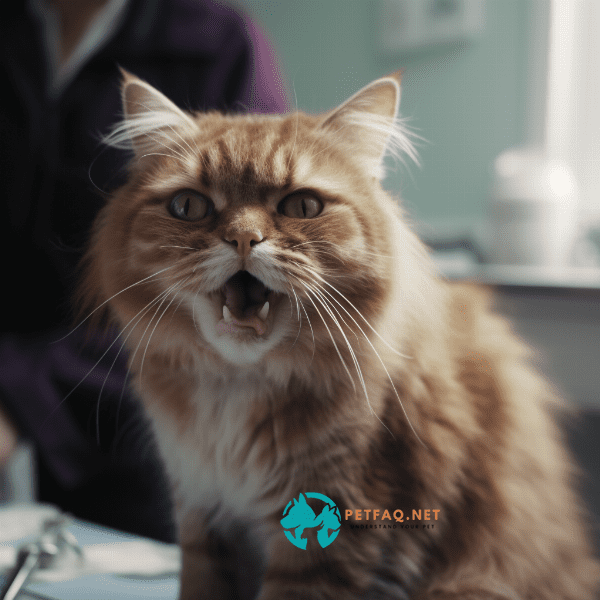
Diagnosis of Feline Dental Disease: What to Expect
If you suspect that your cat has dental disease, it is essential to take them to a veterinarian for a proper diagnosis. The diagnosis of feline dental disease typically involves a combination of a physical examination, dental radiographs, and other diagnostic tests.
Physical Examination
During a physical examination, the veterinarian will examine your cat’s mouth and teeth for signs of dental disease. They may look for signs of tartar buildup, gingivitis, tooth decay, or other dental problems. They may also check your cat’s lymph nodes and other areas of the body for signs of infection.
Dental Radiographs
Dental radiographs, or X-rays, are an essential part of diagnosing feline dental disease. X-rays can show the extent of dental disease and help identify any underlying problems that may be contributing to dental problems. Dental radiographs are typically performed under general anesthesia, as this allows for better positioning and reduces stress on the cat.
Other Diagnostic Tests
In some cases, additional diagnostic tests may be needed to diagnose feline dental disease. Blood tests can help identify underlying health conditions that may be contributing to dental problems. In addition, cultures or biopsies of the affected areas may be needed to identify specific bacteria or other organisms that may be causing dental disease.
In conclusion, diagnosing feline dental disease typically involves a combination of a physical examination, dental radiographs, and other diagnostic tests. It is important to take your cat to a veterinarian if you suspect they have dental problems. Early diagnosis and treatment of dental disease can help prevent complications and keep your cat healthy and happy.
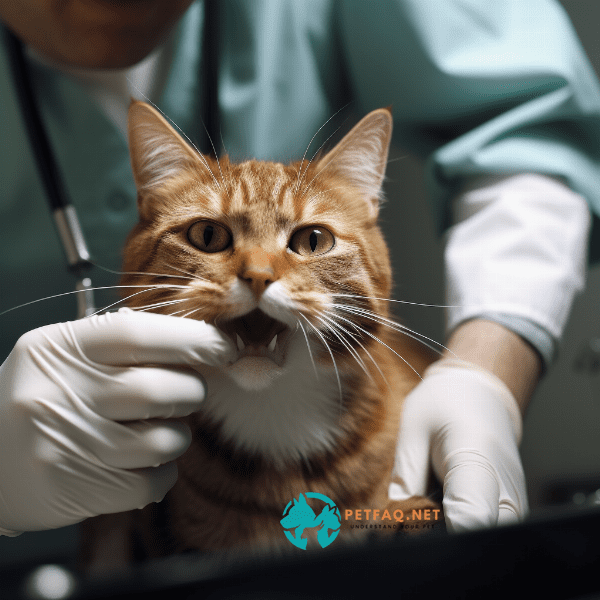
Treatment Options for Feline Dental Disease: A Comprehensive Guide
There are several treatment options available for feline dental disease, depending on the severity of the condition. Treatment may involve a combination of professional cleaning, extractions, and medication.
Professional Dental Cleaning
Professional dental cleaning is the most common treatment for feline dental disease. This procedure involves scaling and polishing the teeth to remove plaque, tartar, and other debris. The procedure is typically performed under general anesthesia to ensure the cat’s comfort and safety.
Extractions
In severe cases of dental disease, extractions may be necessary. This involves removing the affected teeth to prevent further damage and alleviate pain and discomfort. Extractions are typically performed under general anesthesia, and the cat may require pain medication during the recovery period.
Medication
In some cases, medication may be prescribed to treat feline dental disease. Antibiotics may be used to treat infections, while pain medication may be used to alleviate discomfort. In addition, special dental diets or supplements may be recommended to promote good dental health.
Home Care
Home care is an essential part of treating feline dental disease. Cat owners can take steps to promote good dental hygiene at home, such as brushing their cat’s teeth, providing dental treats or toys, and feeding them a healthy diet. Regular dental checkups and cleanings are also essential to prevent dental disease or catch it early when it is more easily treatable.
In conclusion, there are several treatment options available for feline dental disease. Professional dental cleaning, extractions, and medication may be used to alleviate pain and discomfort and prevent further damage. Home care, such as good dental hygiene at home and regular dental checkups, can also help prevent dental disease and keep your cat healthy. If you suspect your cat has dental problems, it is essential to take them to a veterinarian for a proper diagnosis and treatment plan.
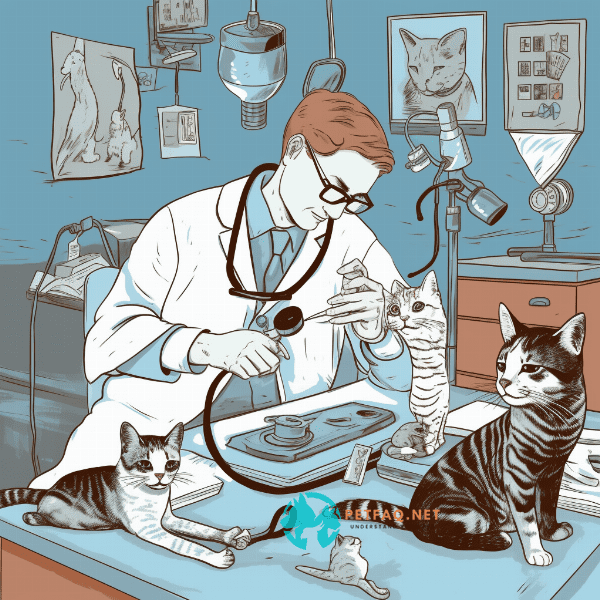
Home Care and Prevention Tips for Maintaining Your Cat’s Dental Health
Preventing dental disease in cats is crucial for their overall health and well-being. Good dental hygiene at home can help prevent dental problems and keep your cat’s teeth and gums healthy. Here are some tips for maintaining your cat’s dental health at home:
Brush Your Cat’s Teeth
Regular brushing of your cat’s teeth is the best way to prevent dental disease. Use a soft-bristled toothbrush and cat-specific toothpaste to brush your cat’s teeth at least twice a week. Start slowly, and gradually increase the duration and frequency of brushing as your cat becomes more comfortable with the process.
Provide Dental Treats and Toys
Dental treats and toys can help promote good dental health by reducing plaque and tartar buildup. Look for treats and toys that are specifically designed for dental health and are safe for cats to chew on.
Feed a Healthy Diet
Feeding your cat a healthy diet can also promote good dental health. Look for cat food that is high in protein and low in carbohydrates. Wet food can be beneficial, as it can help keep your cat’s mouth hydrated and reduce the risk of dry mouth.
Schedule Regular Dental Checkups
Regular dental checkups and cleanings are essential for maintaining your cat’s dental health. Your veterinarian can perform a thorough dental examination and identify any potential problems before they become severe.
Monitor Your Cat’s Dental Health
Keep an eye on your cat’s dental health and look for signs of dental disease, such as bad breath, bleeding gums, or difficulty eating. If you notice any of these symptoms, take your cat to the veterinarian for a checkup.
In conclusion, maintaining your cat’s dental health is crucial for their overall health and well-being. Regular brushing, providing dental treats and toys, feeding a healthy diet, scheduling regular dental checkups, and monitoring your cat’s dental health are all important steps in preventing dental disease in cats. By following these tips, you can help keep your cat’s teeth and gums healthy and prevent dental problems in the future.
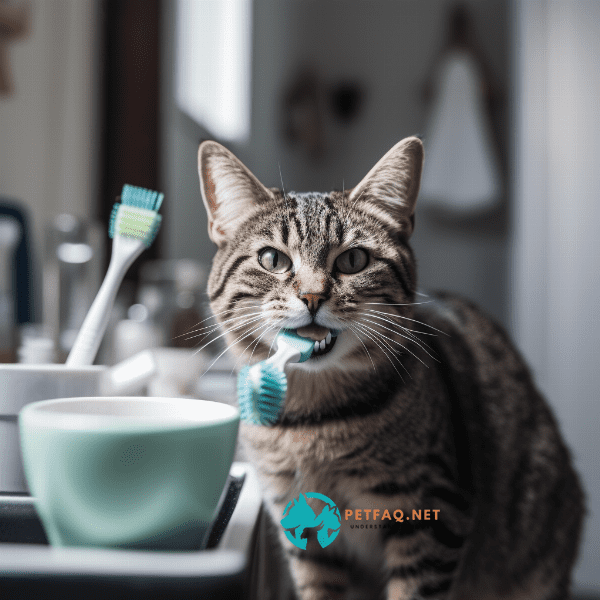
The Importance of Regular Veterinary Dental Exams for Cats
Regular dental exams are essential for maintaining your cat’s dental health. Dental disease in cats can be difficult to detect, and regular checkups can help catch problems early when they are more easily treatable. Here are some reasons why regular veterinary dental exams are crucial for cats:
Early Detection of Dental Disease
Regular dental exams can help identify dental disease early, before it becomes severe. This can help prevent tooth loss, infection, and other complications associated with dental disease in cats.
Professional Cleaning
Professional dental cleaning is an essential part of maintaining your cat’s dental health. During a dental cleaning, your veterinarian can remove plaque, tartar, and other debris that can cause dental disease. This can help prevent the development of dental problems and promote good oral hygiene.
Tailored Treatment Plans
If your cat does develop dental problems, a regular dental exam can help your veterinarian develop a tailored treatment plan. Treatment plans can vary depending on the severity of the dental disease, and regular checkups can help ensure that your cat receives the appropriate treatment for their specific needs.
Preventive Care
Regular dental exams can also help prevent dental disease in cats. Your veterinarian can provide advice on good dental hygiene at home, recommend dental diets or supplements, and identify any potential risk factors for dental disease.
In conclusion, regular veterinary dental exams are essential for maintaining your cat’s dental health. Early detection of dental disease, professional cleaning, tailored treatment plans, and preventive care are all important reasons why regular dental exams are crucial for cats. If you have any concerns about your cat’s dental health, it is important to schedule a dental exam with your veterinarian as soon as possible.
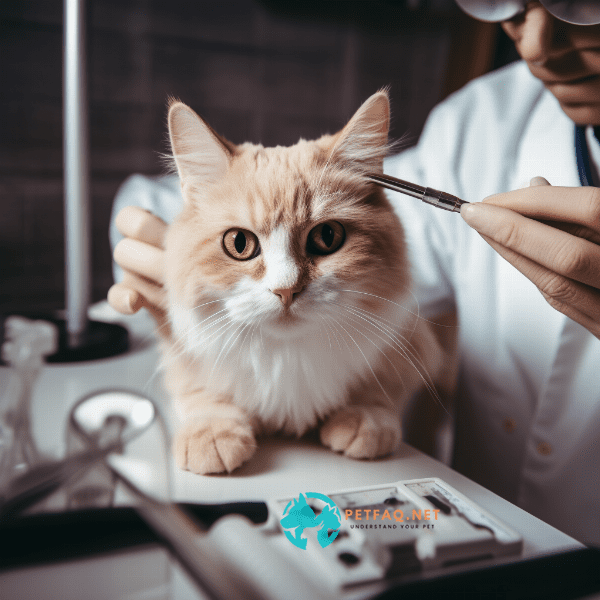
Addressing Dental Anxiety in Cats: Tips for a Successful Visit
Many cats experience dental anxiety, which can make veterinary dental exams and treatments challenging. However, there are several strategies that cat owners can use to help their cats feel more comfortable and relaxed during dental exams and treatments.
Familiarization
Familiarizing your cat with the veterinarian’s office and dental exam equipment can help reduce their anxiety. Consider bringing your cat to the office for a few brief visits before their dental exam or treatment, allowing them to explore the environment and become more comfortable with the staff and equipment.
Positive Reinforcement
Positive reinforcement can be a powerful tool in reducing dental anxiety in cats. Consider using treats, praise, or toys to reward your cat for good behavior during dental exams or treatments. This can help your cat associate the dental experience with positive outcomes, making them more comfortable in the future.
Medication
In some cases, medication may be necessary to address dental anxiety in cats. Your veterinarian may prescribe an anti-anxiety medication or sedative to help your cat relax during the dental exam or treatment. Be sure to follow your veterinarian’s instructions carefully when administering medication to your cat.
Proper Restraint
Proper restraint during dental exams and treatments is important for both the cat’s safety and the veterinarian’s ability to perform the necessary procedures. Ensure that your cat is restrained properly during the exam or treatment, and avoid restraining them too tightly, which can cause additional anxiety.
In conclusion, addressing dental anxiety in cats is important for ensuring a successful dental exam or treatment. Familiarization, positive reinforcement, medication, and proper restraint are all strategies that can help reduce dental anxiety in cats. By working closely with your veterinarian and using these strategies, you can help ensure that your cat receives the dental care they need to maintain good oral health and prevent dental disease.
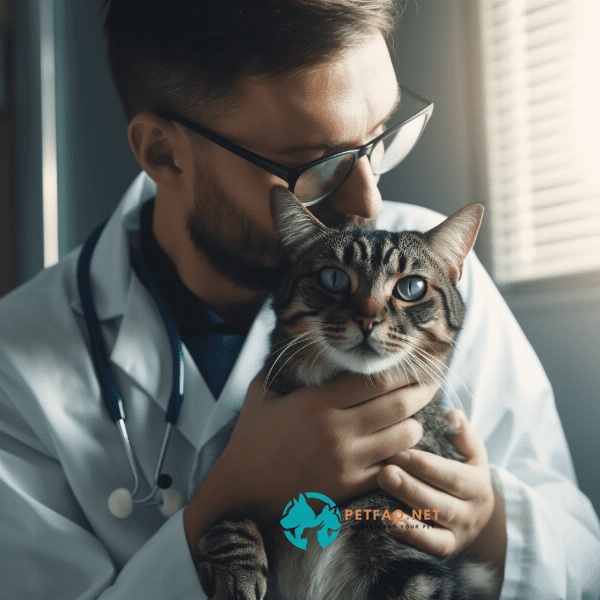
Frequently Asked Questions (FAQs) about dental disease in cats:
1. What is the cost of treating dental disease in cats?2. How does a cat's diet impact their dental health?
3. Pawing at the mouth: If your cat is pawing at their mouth or face, this could indicate that they are experiencing dental pain.
4. What are the signs and symptoms of dental disease in cats?
5. What are the common dental diseases that affect cats?

